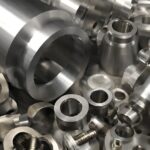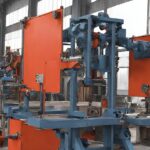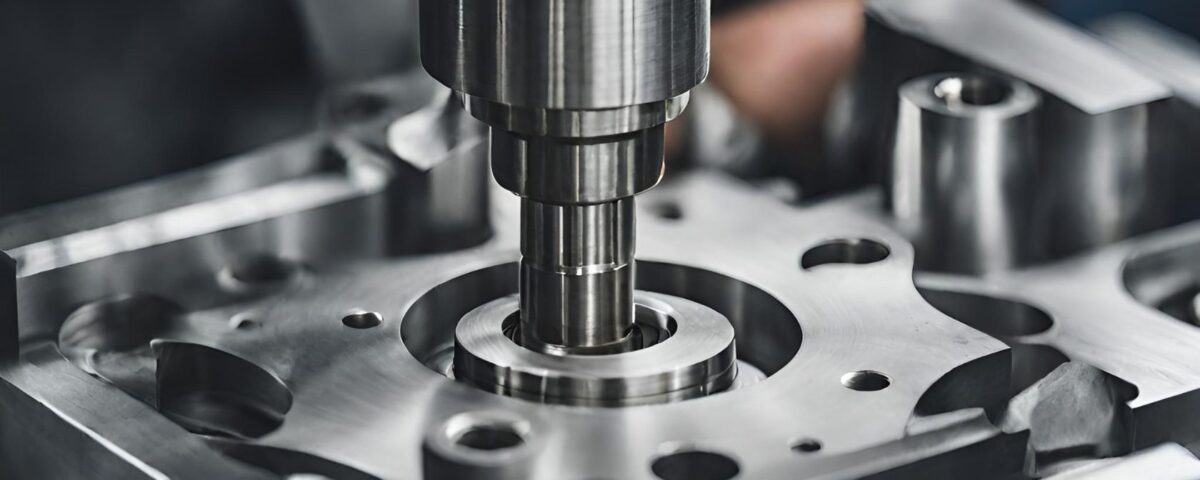
The Art and Science of Precision Machined Components: Crafting Perfection
18 April 2024
Mastering the Art of Aluminum Casting for Stunning Results
23 April 2024Introduction
Precision machining stands as a cornerstone in the world of manufacturing, where the demand for exactitude and fine detail is paramount. This sophisticated process involves removing material from a workpiece while holding close tolerances to create a finished product with extreme accuracy. Essential in industries where the smallest measurement variations can determine the success or failure of the final product, precision machining caters to sectors such as aerospace, medical, automotive, and electronics. The evolution of this technique has been significantly influenced by advancements in technology, especially with the advent of Computer Numerical Control (CNC) systems. These systems have transformed traditional machining by automating operations that once required manual adjustment and control, enhancing both precision and efficiency.
As CNC technology continues to advance, the capabilities of precision machining expand, enabling manufacturers to achieve greater levels of detail and complexity in their components. Today, precision machining not only refers to the ability to produce parts with tight tolerances but also to the repeatability and reliability of these processes over large production runs. Manufacturers rely on state-of-the-art machinery and cutting-edge software to translate intricate blueprints into flawless physical parts. The meticulous nature of this craft does not merely lie in following specifications; it involves a deep understanding of material properties, machining dynamics, and tooling precision, all of which are crucial for mastering perfection in every cut. This relentless pursuit of accuracy ensures that every component functions seamlessly within its intended application, marking precision machining as an art form that combines the best of technology, skill, and innovation.
Essential Tools and Technologies in Precision Machining
Precision machining relies heavily on the integration of advanced tools and cutting-edge technologies to achieve unparalleled accuracy and efficiency. At the heart of these operations are CNC machines, which are pivotal for industries demanding high precision. These machines range from 3-axis systems for relatively simple operations to 5-axis machines capable of complex cuts and intricate detailing, allowing for the manipulation of a workpiece along multiple axes simultaneously. This versatility is critical for producing complex geometries that are impossible with less advanced machinery.
In addition to the hardware, software plays a crucial role in precision machining. Computer-Aided Design (CAD) and Computer-Aided Manufacturing (CAM) software are essential for translating meticulous designs into precise machining instructions. These tools enable programmers to simulate and visualize the entire machining process before actual production begins, minimizing errors and material waste. Such software not only ensures that machines execute exactly as intended but also allows for adjustments and optimizations that enhance the final product's quality. Together, these sophisticated technologies equip precision machinists to tackle the most challenging projects, ensuring each component is crafted with the highest accuracy.

Materials and Techniques in Precision Machining
Precision machining encompasses a diverse array of materials, each selected based on the specific requirements and characteristics desired in the final product. Metals such as aluminum, titanium, and stainless steel are frequently chosen for their strength, durability, and resistance to corrosion, making them ideal for aerospace and automotive applications. Plastics like PEEK and polycarbonate offer excellent weight savings and flexibility, key attributes for medical devices and consumer electronics. Advanced composites are also increasingly used for their unique properties such as high strength-to-weight ratios, which are critical in high-performance applications.
The machining of these materials requires meticulous handling and specialized techniques to maintain the integrity of the workpiece while achieving the necessary precision. For instance, aluminum is machinable and lightweight but requires sharp tools and appropriate cutting speeds to prevent buildup on the cutting tool. Titanium, known for its toughness and high melting point, demands aggressive yet controlled machining strategies to manage its tendency to work harden. Similarly, plastics need to be machined at correct temperatures to avoid melting or warping during the process.
Techniques such as high-speed machining (HSM) are employed to enhance the efficiency and surface quality of machined parts. HSM utilizes high spindle speeds and feed rates to reduce heat generation and force on the material, resulting in smoother finishes and longer tool life. Each material and machining technique combination is carefully selected and optimized based on the component’s end-use, ensuring that the precision machining process not only meets but exceeds the rigorous standards of modern manufacturing.
Industry Applications of Precision Machining
Precision machining is pivotal across various industries, each with unique requirements that dictate the use of specialized machining strategies and materials. Below is a table that outlines key industry applications, highlighting the specific needs and typical components produced via precision machining:
| Industry | Typical Components | Material Preferences | Machining Requirements |
|---|---|---|---|
| Aerospace | Engine components, landing gear | Titanium, aluminum, high-temp alloys | High precision, tight tolerances, superior surface finish |
| Medical | Surgical instruments, implants | Stainless steel, titanium, plastics | Biocompatibility, complex geometries, sterile manufacturing |
| Automotive | Engine parts, transmission components | Aluminum, steel, composites | Durability, heat resistance, cost-effectiveness |
| Electronics | Enclosures, heat sinks | Aluminum, copper, plastic | Miniaturization, precision, thermal and electrical conductivity |
| Military | Armor plating, communication devices | Hardened steels, aluminum alloys | Robustness, precision, ability to withstand extreme conditions |

Quality Control and Assurance in Precision Machining
Quality control and assurance are paramount in precision machining, where even the slightest deviation can result in product failure. Rigorous quality control processes are implemented to ensure that every machined part meets strict specifications. This starts with the selection of raw materials and continues throughout the machining process until the final inspection. Manufacturers utilize advanced measuring instruments, such as Coordinate Measuring Machines (CMM), optical comparators, and laser scanners, to perform detailed inspections. These tools provide precise and repeatable measurements that are crucial for maintaining the high standards expected in precision machining.
Moreover, adherence to international quality standards such as ISO 9001 for quality management systems and ISO/TS 16949 for the automotive industry is common. These certifications require an organized approach to quality management and continuous improvement, ensuring that manufacturers meet both customer and regulatory requirements. Additionally, process audits and part approvals like First Article Inspection (FAI) are routine, providing an initial validation of process capability and part conformity.
The combination of sophisticated measurement technologies, adherence to rigorous standards, and continuous process improvement underscores the industry's commitment to quality. This systematic approach to quality assurance not only builds trust with customers but also reduces the risk of costly recalls or rework, thereby enhancing overall operational efficiency and product reliability in the precision machining industry.
Challenges and Innovations in Precision Machining
Precision machining faces several challenges that drive ongoing innovation within the industry. One of the primary concerns is the cost-efficiency of producing high-precision parts, especially when dealing with expensive materials and complex production techniques. Another significant challenge is the skilled labor shortage; the high level of expertise required for precision machining is not easily found, and training new personnel is both time-consuming and costly. ards expected in precision machining.
To address these challenges, the industry has turned to technological advancements and automation. The integration of artificial intelligence (AI) and machine learning into CNC machines is revolutionizing the field. These technologies enable smarter production processes that can predict tool wear, optimize cutting paths, and even automate quality control, thereby reducing human error and enhancing productivity.
Additionally, the adoption of additive manufacturing or 3D printing is providing new ways to approach complex geometries that were previously impossible or too costly to machine. This technology complements traditional machining processes and opens up new possibilities for design and production.
These innovations not only tackle the inherent challenges of precision machining but also push the boundaries of what can be achieved, ensuring the industry continues to evolve and meet the increasing demands of high-precision manufacturing.
Conclusion
Precision machining is an indispensable pillar in the manufacturing industry, crucial for producing components with the utmost accuracy and consistency. As technologies evolve and market demands increase, the need for innovation in this field becomes even more critical. Companies must embrace advanced CNC technologies, invest in continuous training for their workforce, and integrate new methodologies like AI and 3D printing to stay competitive.
We encourage industry professionals to not only adopt these advanced technologies but also to foster a culture of continuous improvement and innovation within their operations. By doing so, businesses can enhance their production capabilities, maintain high quality standards, and ultimately drive growth. Investing in the latest machining technologies and training programs is not just about keeping up with the competition—it's about setting the pace and leading the industry forward. Let us commit to excellence in every cut and innovation in every process, shaping the future of manufacturing with precision and skill.




